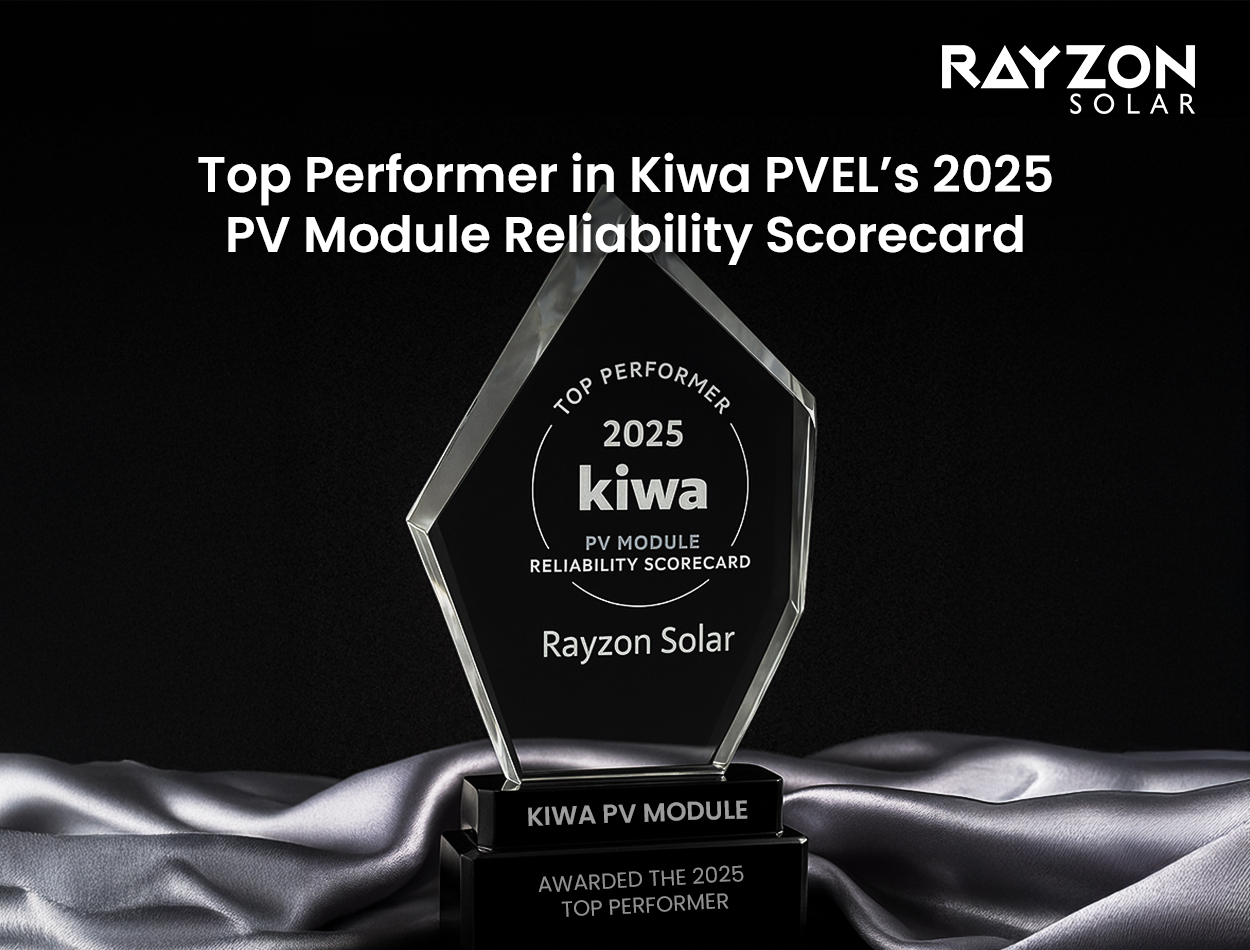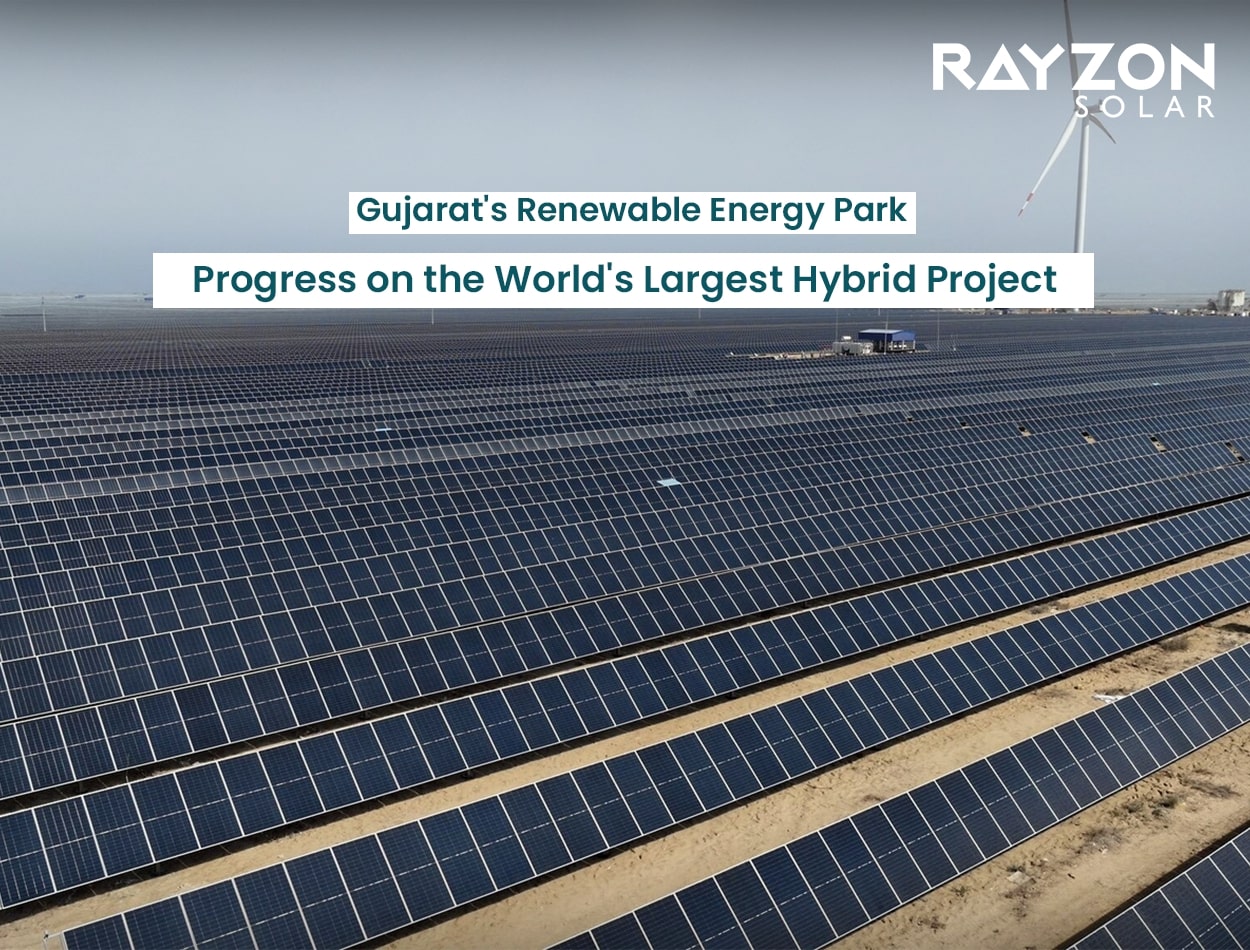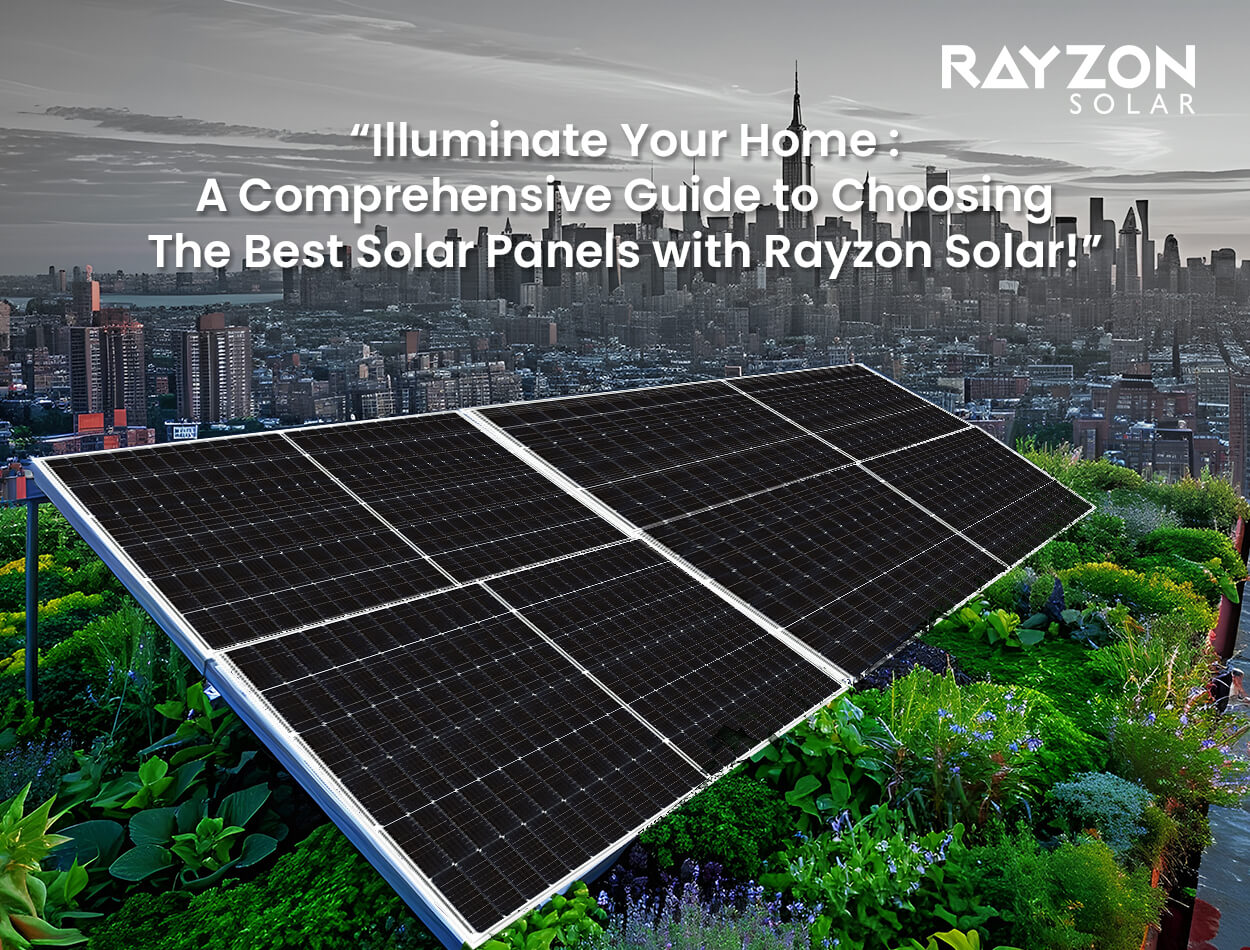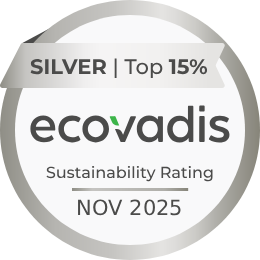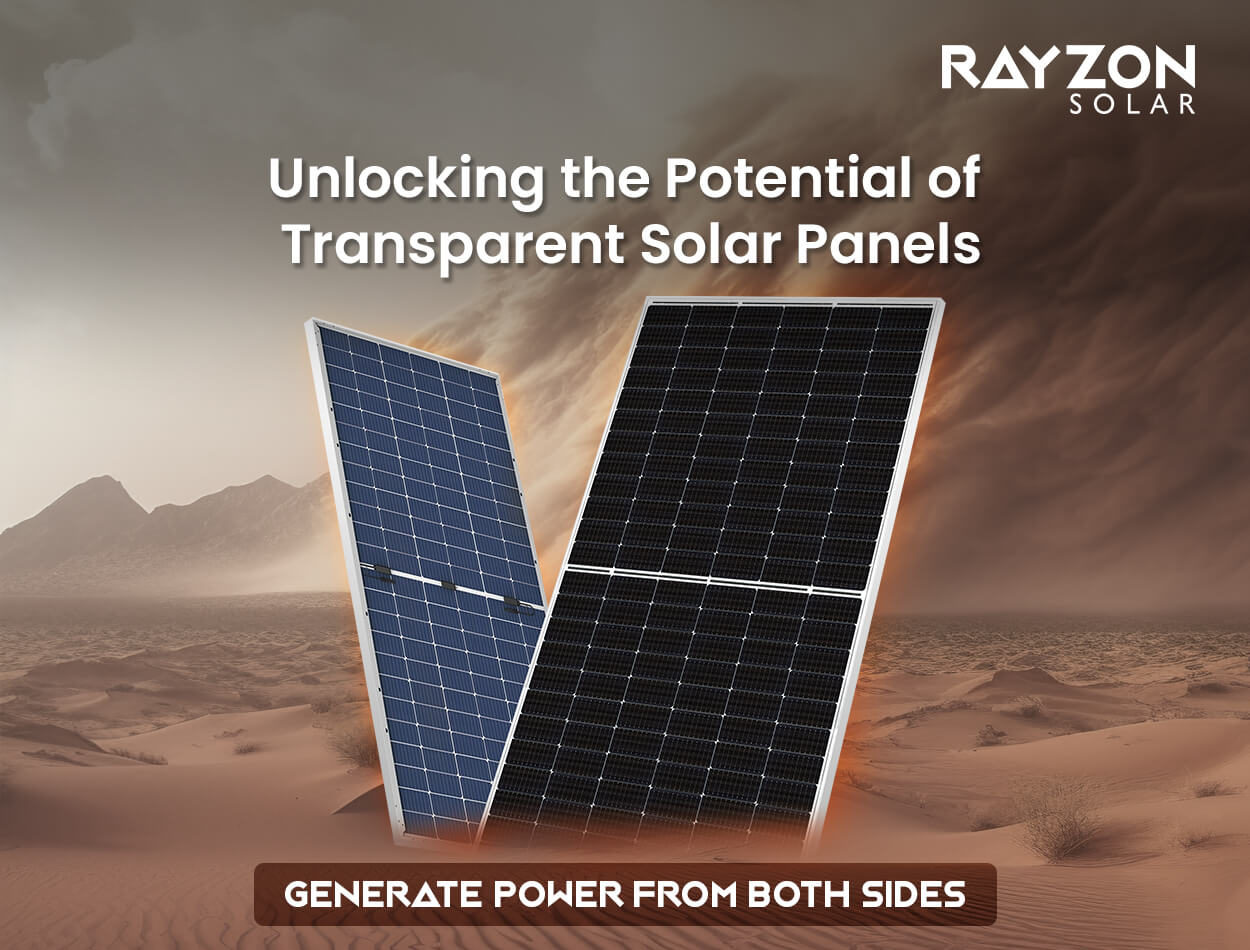
The Future of Solar Energy: Unlocking the Potential of Transparent Solar Panels
One of the biggest hurdles in the widespread adoption of solar energy, especially in urban areas, is finding space for traditional solar panel installations. Transparent solar panels, a groundbreaking technology, are set to change this by seamlessly integrating into built environments. Rayzon Solar, a top solar panel manufacturer and the best solar company in India leads in developing these innovative panels. Their transparent solar panels capture invisible wavelengths while allowing visible light through, ideal for windows, facades, and skylights. Rayzon Solar's commitment to quality and sustainability makes it a leader in the industry, paving the way for a more energy-efficient future.
History of Transparent Solar Panels
In 2014, researchers at Michigan State University (MSU) introduced the concept of transparent solar panels. These panels are fully transparent and allow visible light to pass through, while generating solar energy. This innovative technology has the potential to be used in windows, touchscreens, and other transparent surfaces.
How Transparent Solar Panels Work
Transparent solar panels convert visible light into electricity. In contrast, transparent solar panels can capture unseen wavelengths like infrared and ultraviolet light, while still allowing visible light to pass through. This smart design enables the panels to produce electricity while remaining see-through.
Transparent solar panels consist of multiple layers, including transparent conductive layers, semiconductor layers, and protective coatings. These layers work together to harness sunlight and convert it into electricity, all while permitting visible light to pass through.
Balancing Transparency and Power Generation
One challenge with transparent solar panels is their efficiency. Fully transparent solar panels currently have an efficiency of around 1%, with potential to reach 5% in the future. While this is lower than traditional solar panels, the versatility and practicality of transparent solar panels make them a great option for many applications where traditional panels are not feasible.
Partially See-Through and Semi-Transparent Alternatives
In addition to fully transparent panels, there are also partially see-through and semi-transparent options. These alternatives strike a balance between transparency and efficiency. Partially see-through panels absorb about 60% of the light they receive, with an efficiency of around 7.2%. Semi-transparent panels, which allow less light through, are commonly found in the market and work well for windows and greenhouses where some light filtration is needed.
Exploring the Versatile Applications of Transparent Solar Panels
Transparent solar panels have a wide range of applications, including use in buildings, consumer electronics, cars, and space technology.
1. Building-Integrated Photovoltaics (BIPV): Transparent panels can be used in windows, facades, and skylights, turning them into energy-generating surfaces without blocking natural light.
2. Greenhouses: These panels can power greenhouse operations while letting sunlight through for the plants.
3. Consumer Electronics: Transparent panels can extend battery life or provide extra power for devices like smartphones and tablets.
4. Automotive: They can be integrated into vehicle windows or sunroofs, helping power electric or hybrid cars.
5. Outdoor Furniture and Shelters: Transparent panels can be used in bus shelters, benches, or pavilions, providing shade and generating green energy.
6. Portable Chargers: Clear solar cells can be built into portable chargers, allowing users to charge devices with solar power anywhere.
7. Military and Emergency Applications: These panels can provide power in the field or during emergencies.
8. Aerospace: Clear solar cells can be used on spacecraft or satellites for power.
9. Consumer Products: Wearable devices, backpacks, and even clothing can include transparent panels to generate power.
10. Public Spaces and Infrastructure: Transparent panels can be integrated into bus stops, walkways, or canopies, combining functionality with renewable energy.
Leading Companies in the Transparent Solar Panel Industry
Rayzon Solar is at the forefront of innovation and quality in the solar industry. As a leading solar panel manufacturer, Rayzon Solar offers the best solar panels for both home and commercial use. Their commitment to advancing solar technology and providing high-quality, efficient solar solutions has positioned them as a top choice for those seeking the best in solar energy. With a focus on delivering superior products and services, Rayzon Solar continues to drive the industry forward, paving the way for a sustainable and energy-efficient future.
The Future of Transparent Solar Panels
The United States alone has an estimated 5 to 7 billion square meters of glass surfaces, offering enormous potential for transparent solar panels. These panels could be integrated into skyscraper windows, vehicle sunroofs, and mobile device screens to generate renewable energy from every transparent surface.
As this technology continues to advance, it promises to revolutionize solar power generation by combining aesthetics with green energy. Transparent solar panels will seamlessly blend into our surroundings, providing renewable energy without compromising design or functionality.
A Comparative Analysis: Transparent Solar Panels vs. Traditional PV Panels
Transparent solar panels have unique advantages, but how do they compare to traditional photovoltaic (PV) panels?
Advantages of Traditional Solar Panels:
- Higher energy conversion efficiency, with some panels exceeding 22% efficiency.
- A mature technology with decades of testing and predictable performance.
- Widely available for large-scale use due to robust manufacturing capacity.
Advantages of Transparent Solar Panels:
- Perfect for urban areas with limited space, as every transparent surface can generate power.
- Aesthetic integration, with solar glass blending seamlessly into buildings.
- Less critical sun angle, offering more deployment options.
- Mobile electronics can partially recharge using ambient light.
- Efficient use of resources by fulfilling dual functions in buildings.
- Lightweight and portable before being applied to glass.
Traditional solar panels are highly efficient, but transparent solar panels are valuable for generating solar energy in locations where traditional panels are not suitable. As the efficiency of transparent solar panels improves, they will become an even more feasible option to complement traditional installations.
The Future of Solar Power: Embracing Innovation and Sustainability
As the world shifts towards cleaner energy, innovation in the solar industry is key to increasing solar power's share of the energy mix. Traditional solar panels are excellent for rooftops and solar farms, but transparent solar panels offer solutions for dense urban areas and lightweight applications.
To provide continuous solar energy, advancements in energy storage are also needed. Combining innovative solar technologies like transparent panels with strong storage solutions will lead to a sustainable and resilient energy future.
At Rayzon Solar, we are dedicated to driving innovation in the solar industry and promoting renewable energy solutions. Our mission is to simplify solar system design, engineering, and field service management for clean energy contractors, helping accelerate the transition to a greener future.
Whether you're a solar professional seeking expert guidance, an architect exploring BIPV solutions, or a homeowner interested in solar energy, Rayzon Solar is here to support you. Explore our range of solar energy services, including solar permit plan sets, engineering reviews, and solar field services, and let us help you unlock the full potential of solar power.
Together, we can embrace the future of transparent solar panels and create a more sustainable, energy-efficient world.
You can also read this: Perovskite Solar Cell Technology
